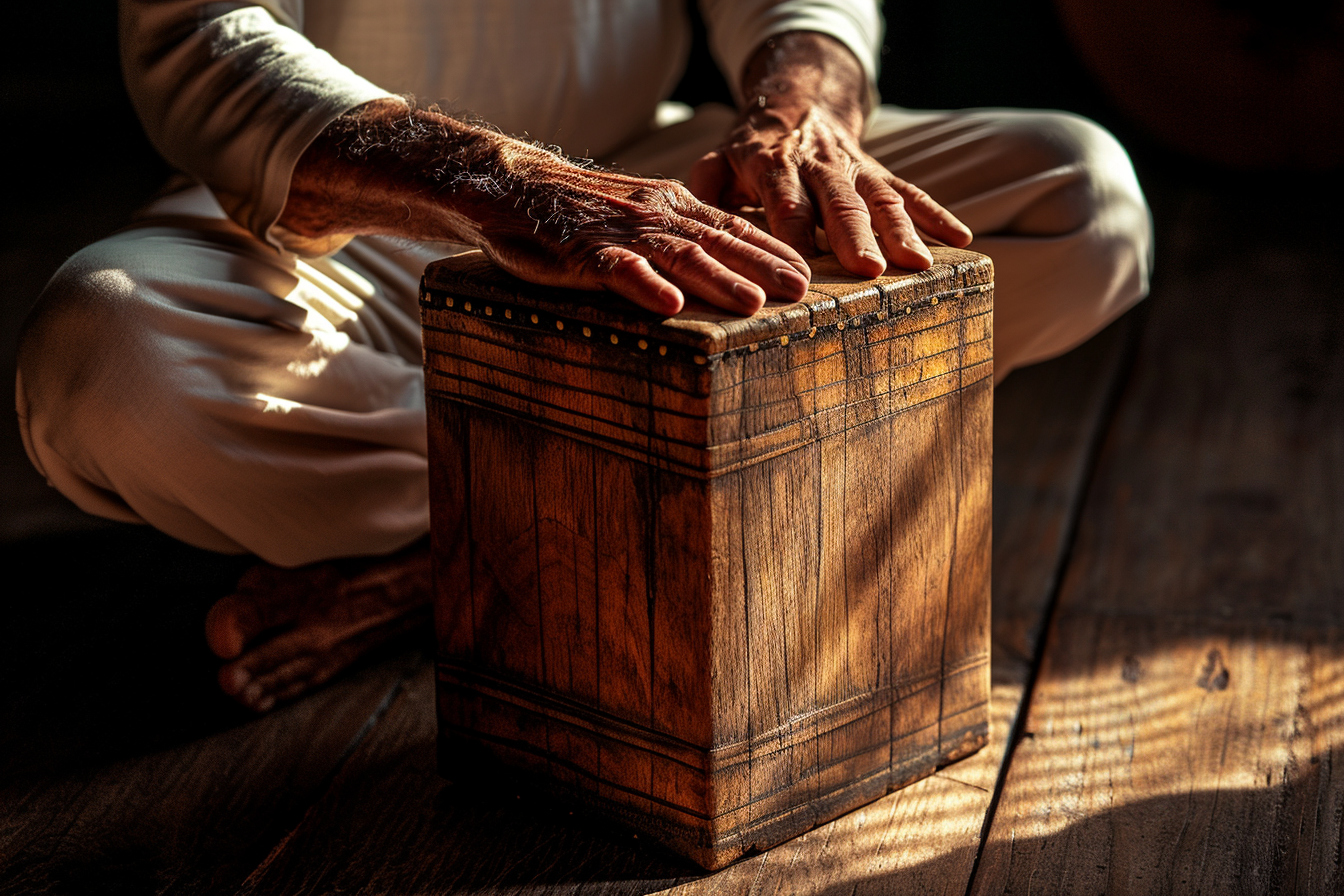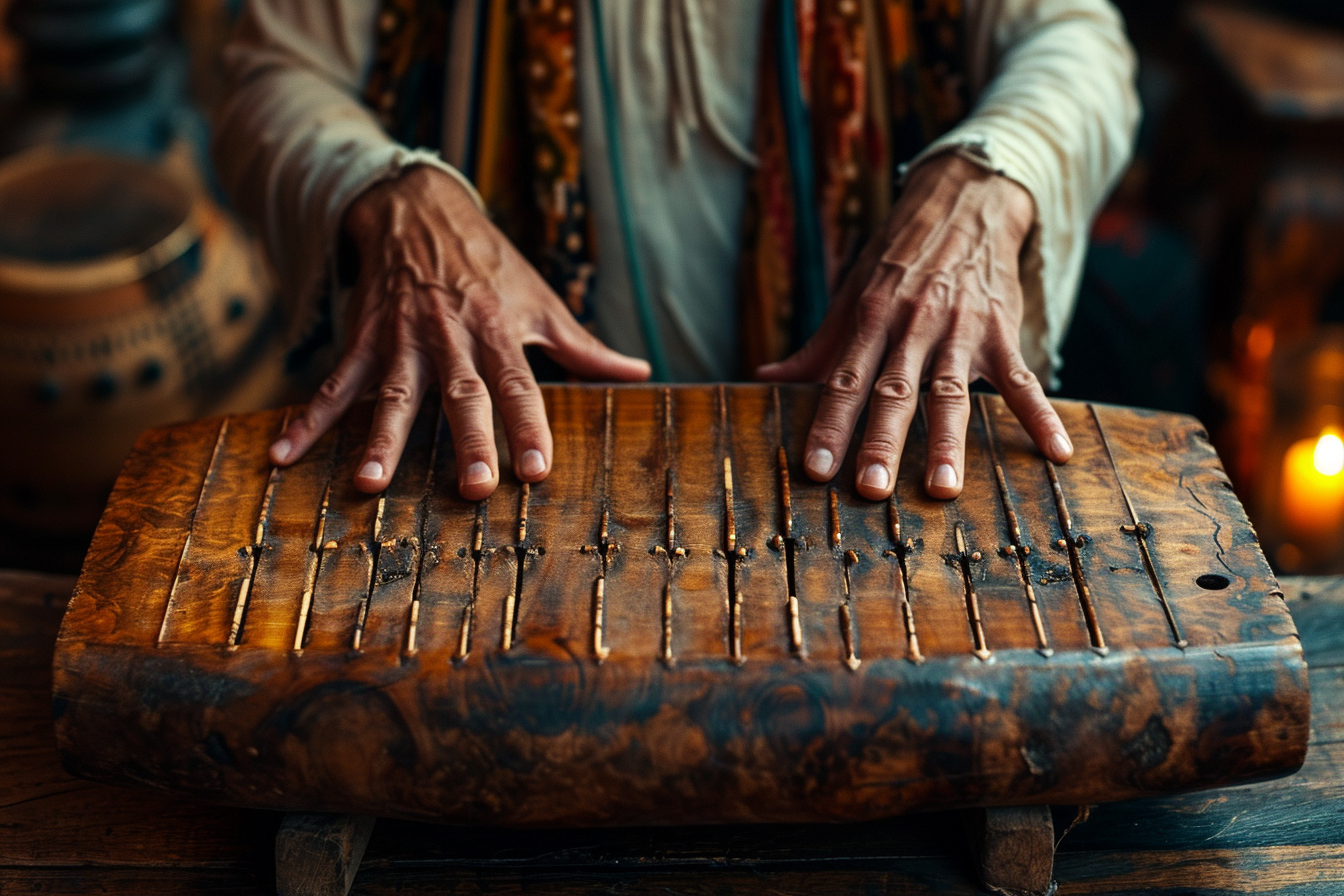Originally from Peru, the cajón has transcended its traditional Afro-Peruvian roots to become a staple instrument in various musical genres worldwide. Its wooden box-like structure and simple design belie the rich, complex sounds it can produce. The cajón’s popularity lies in its versatility and portability, making it a favored choice for musicians across flamenco, jazz, pop, and acoustic music.
Understanding the cajón’s design
The body
Selecting the ideal cajón begins with a grasp of its design elements. The body, traditionally crafted from hardwoods, acts as the sound chamber. Different woods impart distinct tonal qualities, from the warm resonance of mahogany to the brighter, punchier sounds of birch. The thickness and size of the cajón also affect the overall sound, with larger models producing deeper bass tones.
The playing surface
The tapa, or playing surface, is where hands meet wood. This thin sheet of plywood often incorporates different types of wood and can feature additional layers or coatings to enhance durability and playability. A responsive tapa ensures a dynamic range from soft, sensitive touches to powerful, bass-heavy slaps.
The sound hole
Positioned at the back or side of the cajón, the sound hole projects and shapes the instrument’s voice. The hole’s size and placement influence the cajón’s overall tonal character, affecting volume and resonance.
Internal snares and strings
Most cajóns come equipped with snares or guitar strings fitted against the inside of the tapa, which add a snappy, crisp sound to the higher tones. Some models let you adjust or disengage the snares for a more traditional Peruvian sound or enhanced versatility.
Factors to consider when choosing a cajón
Music genre and playing style
Your musical context plays a significant role in selecting a cajón. Flamenco cajóns typically feature guitar strings that give a vibrant sizzle, while cajóns geared towards Afro-Peruvian music may lack strings entirely. Consider how the cajón’s sounds complement your genre and the techniques you employ.
Craftsmanship and build quality
The construction quality of a cajón dictates not only its durability but also its sound. Examine the joints and edges for signs of expert craftsmanship. A well-built cajón should feel sturdy, with no buzzing or rattling during play.
Personal comfort and ergonomics
Playing the cajón involves sitting on it for extended periods. Select a model that supports your posture and playing style. Adjustable cajóns cater to various body sizes and playing preferences, ensuring comfort during performances.
Sound variation and features
Assess different cajón models for their range of sounds. A good cajón should deliver robust bass and clear, contrasting high tones. Models with tunable snares or adjustable front plates offer sound-customization options that cater to discerning ears.
In-Depth analysis of cajón features
Wood types and their impact on sound
The choice of wood affects not only the instrument’s durability but also its tonal signature. Hardwoods like mahogany and oak yield denser, more resonant bass tones, while softer woods like birch can produce brighter sounds. Exotic woods such as bubinga and zebrawood, while more costly, offer unique aesthetic and sonic qualities.
Mahogany: Known for providing warm, rich lows and a balanced tonal spectrum.
Birch: Offers a bright attack, making it a favorite for players seeking clarity and punch.
Oak: Delivers a strong fundamental tone, with enough sustain and projection for louder musical settings.
Exotic Woods: For those desiring exclusivity and distinct tones, woods like bubinga or walnut can present unique sound characteristics.
Tunable systems: customizing your sound
Tunable cajóns have become increasingly popular, as they allow musicians to alter the pitch and response of the bass and snare sounds. Some models use Allen wrenches or knobs for tuning, providing on-the-fly adjustments during performances or recording sessions.
String and snare configurations
The arrangement and responsiveness of strings and snares substantially influence the cajón’s snare sound. Some layouts promote a buzzing snare effect, while others aim for a cleaner separation between the bass and snare tones. Audition various configurations to discern what aligns with your aesthetic preferences.
Additional considerations: portability and accessories
For gigging musicians, the weight and size of the cajón can be a deciding factor. Some models feature carrying handles or come with padded bags for easier transport. Add-ons like kick pedals or external microphones expand the cajón’s capabilities, accommodating diverse performance needs.
Fine-Tuning your selection
Trials and testing
When possible, personally test various cajóns. Pay close attention to how the instrument feels and responds to your playing style. A compatible cajón should feel like an extension of your musical expression, reacting sensitively to your touch and providing the necessary dynamic range.
Seeking expert opinion
Consulting with seasoned percussionists or reputable music store staff can provide valuable insights into the nuances of different cajón models. They may offer recommendations based on their experiences that align with your needs.
Reviews and brand reputation
Consider the reputation of cajón manufacturers. Established brands with positive user reviews often guarantee a certain level of quality and reliability. Researching online forums and customer feedback can reveal the strengths and potential issues of specific cajóns.
Budget and investment
Set a reasonable budget for your cajón purchase. Prices can range from affordable, entry-level models to professional-grade instruments costing several hundred dollars. Balancing cost against the features and quality you require can lead to a sound investment in your musical journey.
Maximizing the cajón’s potential

Adopting proper techniques
Mastering the correct playing positions and techniques optimizes the cajón’s potential. Embrace lessons, tutorials, and workshops to refine your touch, rhythm, and overall playing style, ensuring that your chosen cajón responds well to your personal approach.
Regular maintenance and care
Cajóns, like all musical instruments, require proper maintenance to preserve their sound quality and longevity. Protect your cajón from excessive moisture and temperature changes. Clean the playing surface gently, and inspect hardware regularly for any signs of wear or the need for adjustment.

The quest for the perfect cajón is a personal and nuanced journey, defined by individual preferences, playing style, and musical needs. By considering the multiple facets of cajón construction, sound, and playability, percussionists can identify an instrument that truly resonates with their artistic vision. With thoughtful selection and dedicated practice, the cajón becomes not just a percussion instrument but an extension of the musician’s inner rhythm and expression.

Leave a Reply